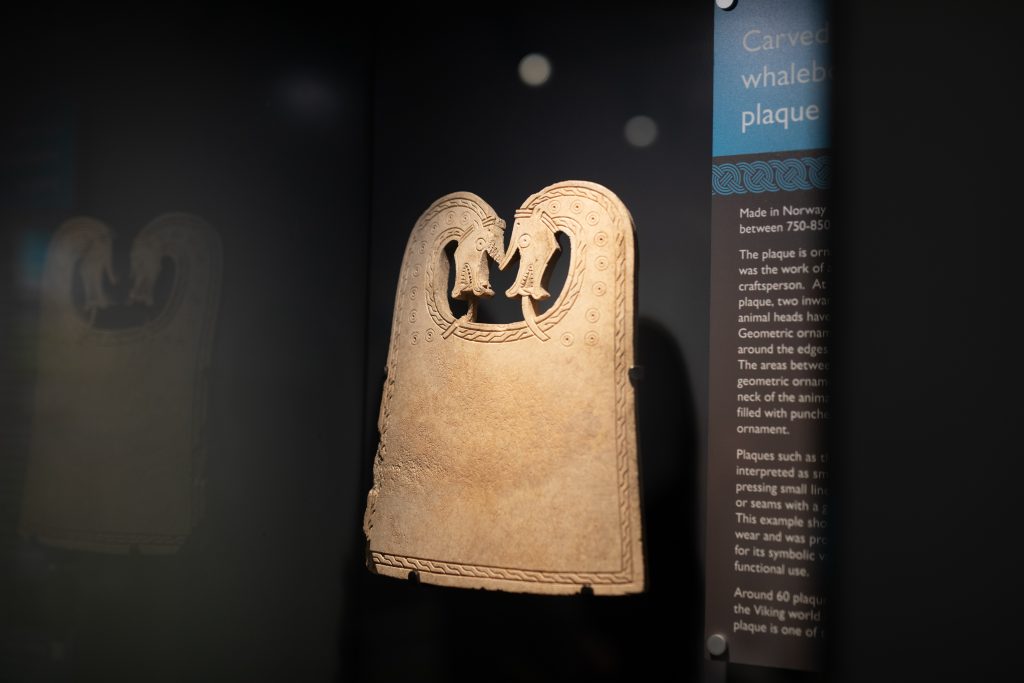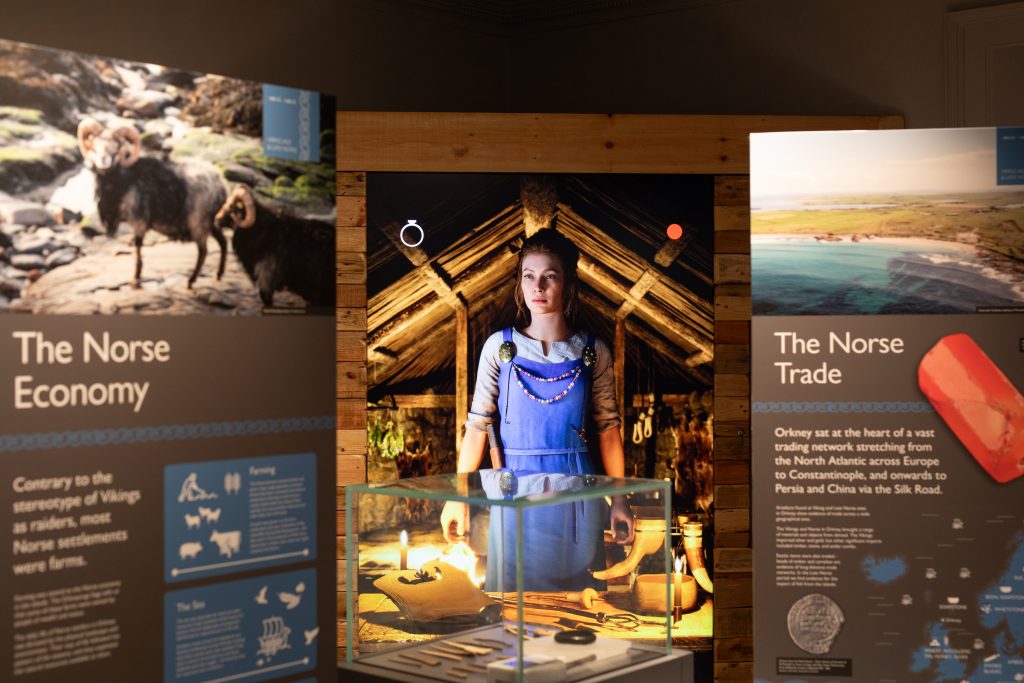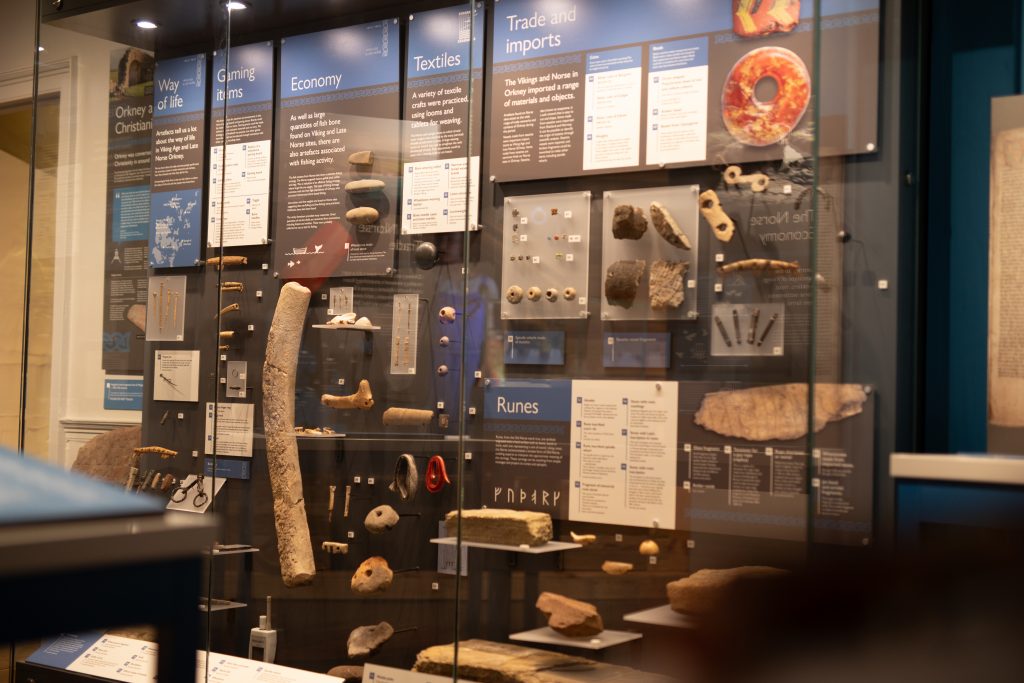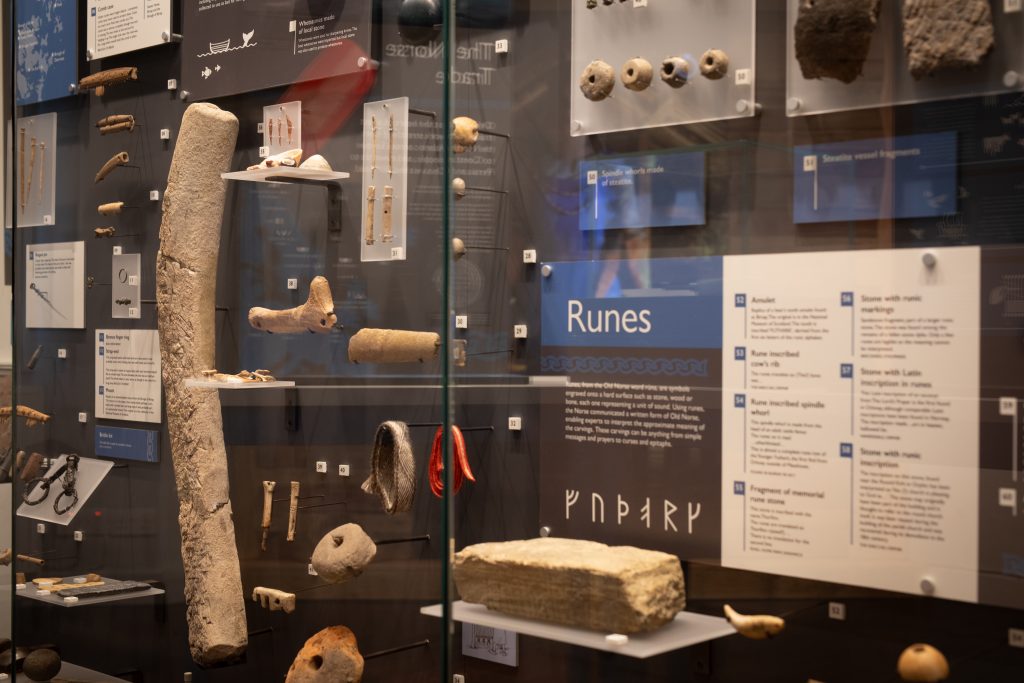Orkney’s deep Viking history as an enduring power base for early Norse explorers and rulers has been brought to life in new galleries at The Orkney Museum in Kirkwall.
Featuring the UK’s first AI-powered Viking character, Ragna, created by Interpretation Designers Rocketbox Design, the galleries chart the Norse past of Orkney – from the earliest interactions with the islands’ Pictish people to the development of Viking trade and political prowess in the region – and the lasting impacts on Orkney’s heritage and culture.
The world class redevelopment features never-before-seen artefacts and cutting-edge display technology, made possible by a generous legacy donation from a former Orkney resident who emigrated to Australia – leaving an express wish that his donation be used to support Viking heritage and history.
True to the donor’s wishes, the galleries have been designed to share and celebrate the region’s Norse heritage. Expert storytelling and exquisite displays of both rare and everyday artefacts combined with bespoke local craftsmanship and interactive options create a truly unique experience for all visitors.
A key feature of the exhibition is Ragna, an interactive AI-powered Viking woman – believed to be the first-of-its-kind for any museum in the UK.
Visitors can ask Ragna about Viking life in Orkney, bringing storytelling to life in a way that museums have been unable to do up until now.
Ragna’s background story has been written by Dr Siobhan Cooke-Miller, Archaeology Curator for the Council, and Tom Muir, local storyteller and recently retired Exhibitions Officer at The Orkney Museum – drawing on archaeological finds and historical documents such as the Orkneyinga saga to inform Ragna’s costume, personal story and her digital surroundings.
Dr Cooke-Miller says: “Our Viking and Norse past has shaped Orkney’s identity and has had a lasting impact on our islands which we can see in our landscape, place-names, language and our rich heritage.
“Thanks to this once in a lifetime donation by someone who clearly was captivated by his own Norse heritage as a child, we’ve been able to offer an unparalleled and tangible window to our Viking past and peoples in a way that transcends the passage of time and brings it to life.”
Nick Hewitt is Team Leader (Culture) at Orkney Islands Council: “This exhibition not only brings history to life but also reconnects our community with its Viking past.
“We’ve sought throughout to make the most of this astounding opportunity and incorporate some of the latest understandings and display technology into the new galleries.
“Visitors will see we’ve worked closely with local craftspeople, archaeologists, and experts to create something truly special – something that belongs to the people of Orkney and by extension I think, given the history of Norse expansion, the people of Scotland and the wider UK.”
Other highlights include:
- A Viking sword from Pierowall Cemetery in Westray – the largest Viking Age cemetery in Orkney, and in Scotland. The sword has been loaned to The Orkney Museum by Salisbury Museum and is the first time it has been back and displayed in Orkney since its excavation in 1839. Seventeen pagan Viking graves were excavated between 1839-1863 at Pierowall, but research suggests there were over 33 pagan burials in the cemetery. There were graves of men and women with a range of grave goods, including personal possessions such as combs and jewellery. Several of the graves included weaponry.
- Rotating displays of nationally significant artefacts from the National Museum of Scotland and Orkney’s own collection.
- Hands-on interactives, allowing visitors to experience Viking trade and traditions.
- New interpretation panels and multimedia experiences, providing fresh perspectives on Orkney’s Norse history.
Councillor Gwenda Shearer, Chair of the committee responsible for the Council’s Culture Services said: “This is a once-in-a-generation overhaul of galleries showcasing one of the most intriguing aspects of our heritage, made possible only by an incredibly generous bequest.
“We hope others will be as excited as we are and plan a visit to see the results of this amazing gift to the people of Orkney for themselves.”
To ensure our rich Viking history can be enjoyed by all, The Orkney Museum is committed to finding new ways to make this exciting exhibition accessible for those who cannot visit in person.
Join us live on Wednesday, August 6th at 12pm for a special YouTube livestream with Dr. Siobhan Cooke-Miller, Archaeology Curator, who will delve into the myths and legends of Orkney’s Norse and Viking heritage and give insight into the new exhibition.
More about the Pierowall sword on display in Orkney for the first time
The sword is on loan courtesy of The Salisbury Museum and dates from 800-950 AD
It was found in the grave, excavated in 1839, of a male who had been buried with his sword, a spear, his shield and comb.
The sword was an expensive weapon. It held a symbolic function as well as a practical one. Swords were the finest of all weapons, and some were richly decorated. Weapons found in Viking burials often appear to have been deliberately destroyed, suggesting they were ‘sacrificed’ as part of the burial ritual. Swords could be broken or bent – the sword from Pierowall is bent.
The sword is a Type H. The pommel does not survive. The only surviving parts of the hilt is lower guard. The lower guard is decorated with alternating strips of copper alloy and silver. The tang survives – this is an extension of the blade. The grip overlies the tang.
This sword is on loan courtesy of The Pitt-Rivers Collection at The Salisbury Museum.




Photos can be downloaded and utilised by Press. Photo Credit: Orkney.com
